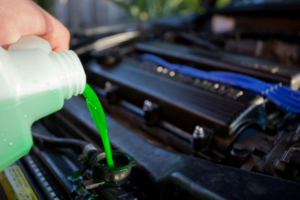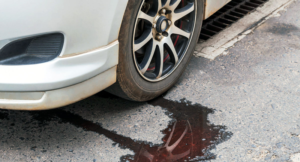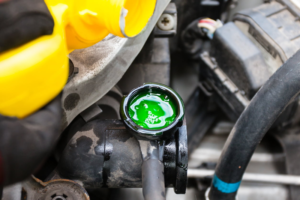The engine is responsible for delivering power to the cars. Unfortunately, Continuous operation makes this car component extremely hot. Over time it melts down and undergoes wear and tear replacement, which is going to burn a hole in your pocket. A car coolant adds a layer of protection to the engine to save it from overheating. It takes the responsibility of lubricating the parts that it comes in contact with, including the water pump, head gasket, cylinder, and piston timing. This crucial car component experiences issues over time that left unattended could impede the engine’s working. The mechanic must be consulted for a car coolant replacement to prevent issues from appearing again.
Role of Engine Coolant In the Car

Are you wondering what the primary role of car coolant is? The coolant generally performs the heat transfer inside the car and gives the engine complete anti-freeze protection to help it run smoothly. As the fuel inside the car burns, the internal combustion dissipates energy. This energy helps the car starts moving ahead, and the rest of it remains as heat. The average combustion temperature is near about 2000°F which rises up to 4500°F in certain cases. Therefore, the engine needs proper temperature to run smoothly, which is generally taken care of by the coolant present in the car.
Common Issues Related to Car Coolant
Car coolant is responsible for protecting the vehicle from overheating. Unfortunately, this car component isn’t immune to problems that have detrimental effects on the car’s engine over time. The car owners need to determine the leading cause of the issue and take it to the mechanic for a car coolant replacement.
Clearly Visible Coolant Leak

If you notice a puddle on the ground or a Coolant odor coming from your car, it’s time to take the issue seriously. Coolant leak is the underlying cause of the problem and must be fixed before it damages other parts of the car. The puddle is generally Telltale Red, Pink, Green, or Blue, generally present under or within the car. This leak can form a build-up on any part of the cooling system. At times, you may notice the temperature guard moving towards the red zone or see an illuminated temperature warning light because of the coolant leak.
Single reason can’t be held responsible for coolant leaks, and the following reasons must be taken seriously:
Hole in the Radiator
Car parts undergo wear and tear under high temperatures. Radiator corrosion is the leading cause of radiator leaks. Older tubes experiences leak quite often, accompanied by debris leading to leaks. The quality of the sealing gasket present between the tank and radiator wears out, ultimately resulting in a leak.
Car Emitting White Smoke
Have you ever come across white smoke within your engine? The possible causes of these issues could be an internal leak, a cracked block, cylinder head, or maybe a gasket failure.
Bubbles Coming Out of the Radiator
You would also come across bubbles in the car’s radiator or combustion overflow tank. This is a sign of a coolant leak and leads to cracks in the engine, head, or head gasket. A new coolant would be an excellent replacement for car coolant that gives issues. The hoses are the actual culprit at times, which become hard and brittle over time and lead to leaks.
Water Pump Failure
It is the responsibility of the water pump to ensure that the coolant moves to every car component. It works with the help of a belt present at the lower region of the engine. Unfortunately, it is attached to the lower hose radiator, and the connection becomes loose and leads to corrosion. The water pump also undergoes external damage, resulting in spring leaks.
Expansion Tank Problems
The car expansion tank generally handles the coolant supply to the radiator. It is connected with a radiator using a rubber hose and gets coolant as the engine heats up or cools down excessively. Over time the plastic attached to it gets weak. Either the container cracks or a cap leaks, and the coolant starts coming out. Initially, the hose moving towards the radiator degrades, or the loose connection is responsible for fluid leaks.
Blown Out Head Gasket
The head gasket plays a crucial role responsible for the smooth working of the engine. You would hardly suspect head gasket issues which would be noticed after covering several miles. Head Gasket maintains a balance between high temperatures and low pressures produced by the engine. It lies between the cylinder head and the engine block and starts leaking, which is generally termed as “Blown,” in other words.
If you suspect any of the following car coolant leakage problems, it is time to get it fixed by the mechanic before anything happens to the car.
Thermostat Failure
Cooling systems often face thermostat issues. The engine temperature is generally controlled using the thermostat and the amount of coolant to be supplied to parts of the car. Unfortunately, when the engine gets hot, the thermostat opens wide and remains closed during cold temperatures. A non-working thermostat prevents heat dissipation and leads to engine overheating and complete failure.
Questions Related to Coolant Posted on Google

How Can We Check the Coolant Levels of the Car?
On the side of a coolant reservoir, a big plastic tank is present under the bonnet. It comes with maximum and minimum adjustments. First, check the guide marks that give information about the falling coolant levels. The coolant levels must be checked every month, and once you’ve covered 50,000 Kms, it’s time to refill it. This job needs to be performed quite often, especially when commuting in an old car.
What’s the Right Way to Change the Car’s Coolant?
You must consider the manufacturer’s recommendations before changing the car’s coolant. After some time, the coolant loses its anti-corrosive quality and needs to be refilled by adding a fresh anti-freeze mixture to it. Changing the car coolant is a simple task and can be performed by implementing the following steps:
- Lift the vehicle using a jack stand.
- Take the radiator hose out and vacate the radiator. Don’t forget to take the coolant pump out.
- Put the radiator hose again and move towards the block drain plug.
- With the help of airpower, the refilling tool add new coolant to the car.
- If you’re unable to do it on your own, a mechanic can help you determine the car coolant system problem and fix it in no time.
Is Driving with Low Coolant Possible?
Don’t drive with a low coolant, leading to engine problems. It also leads to overheating of the coolant pump and head gasket as there is coolant scarcity within the system.
Which is the Best Place to Purchase Car Coolant?
The ‘Auto Parts Shop‘ is your one-stop destination for quality car coolants. The best part is engine sold at our stores is quite affordable and keeps you and the engine happy.No matter where you reside, the experts ensure that the coolant is delivered within a day.
Can I Just Add Coolant to my Car?
If you notice that the car’s coolant levels have plummeted, add some more to it. If the car engine starts overheating, pull it up and give it some time to cool down. After that pop, the hood and look at the coolant reservoir.
The Bottom Line
Take coolant issues seriously the moment you come across them. Leaving the issues unattended could lead to bigger problems and costly repairs. Instead, determine the engine coolant replacement cost from the nearest store and install it to help your car parts stay cool.
